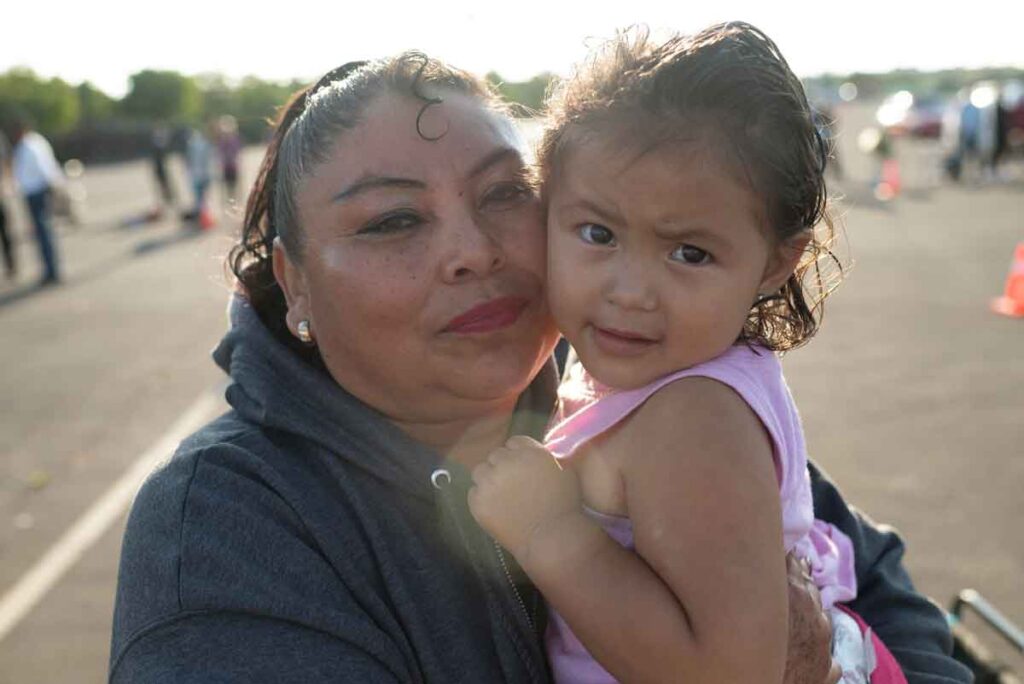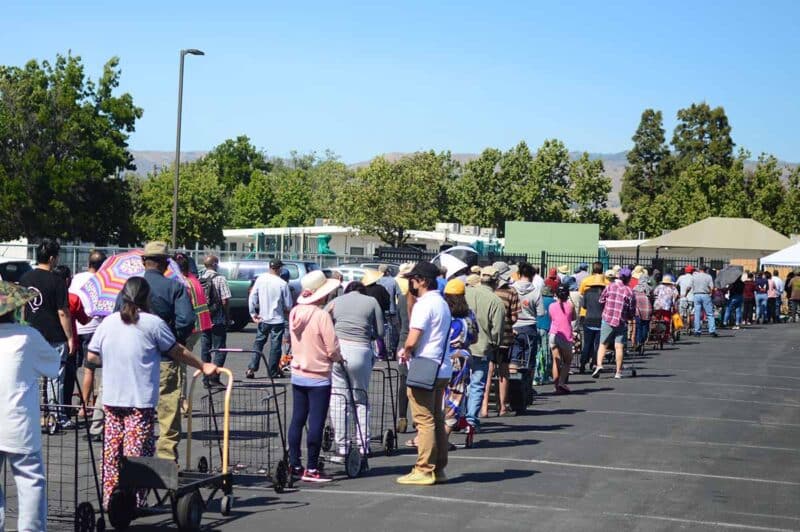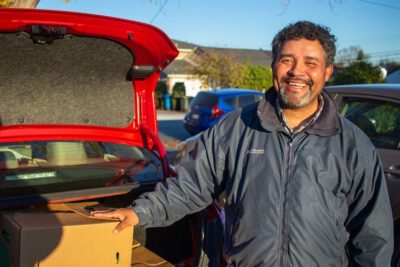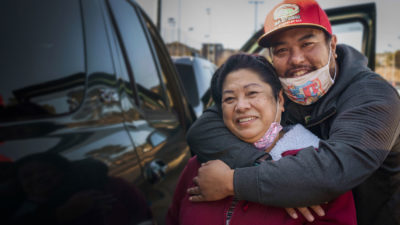Many people wonder why so many Silicon Valley households are struggling with food insecurity when the local job market is strong. Second Harvest of Silicon Valley serves an astonishing 1 in 6 people in Santa Clara and San Mateo counties, yet the local unemployment rate in January 2024 was about 4%. So why does food insecurity exist here? Low unemployment hides a cost-of-living crisis — nearly one-third of all Silicon Valley households do not earn enough money to meet their most basic needs without private or public assistance.
Cost of living strains household budgets
Food is a basic human need, but it costs so much to live here that many families, college students and seniors skimp on nutritious food to pay rent and bills. Given the cost of living in the Bay Area, even people working can have difficulty paying all their bills, while earning too much to qualify for government programs.
“The majority of my money goes to rent,” said Ortencia, 54, a mother of three. “Whatever we were going to spend on food, we use that money to pay for the electric bill. That bill sometimes is very high and so are the other utilities, all paid with my one paycheck. When I run out of money, I’ll use my credit card for the other things that we need. It’s hard. I can never save enough money.”
Otrencia’s struggle, and the amount of food insecurity in the area overall, illustrates a sobering reality. For many residents, no matter how hard they work or how many jobs they hold, their incomes are not sufficient in Silicon Valley. Dennis told us, “I work seven days a week, and I’m sorry to say it, but that’s not enough. I work sometimes 10-14 hours a day, but it’s still not enough.”
The Self-Sufficiency Standard defines the amount of income necessary to meet basic needs (including rent, utilities, childcare, food, transportation, health care and taxes) without public subsidies or private/informal assistance. For one adult the income needed is $57,034 in Santa Clara County and $68,454 in San Mateo County. A four-person household making less than $137,100 in Santa Clara County or less than $149,100 in San Mateo County is considered low income by the federal government when determining housing assistance eligibility.
“People don’t make enough to pay for rent, pay for electricity, water, pay for phone service, bus ticket, all of that,” said Joaquin, a Second Harvest volunteer and client.
The area is so expensive to live in, even residents who are fully employed often need food assistance. A breakdown of typical expenses and assistance shows why:
The average rent for a 1-bedroom apartment is nearly $3,000 in Silicon Valley ($2,861 in Santa Clara County and $2,950 in San Mateo County), and half of Silicon Valley renters are rent burdened, spending more than 30% of their gross income on housing.
Public assistance isn’t enough
While Second Harvest helps connect people to public assistance programs, the reality is that many Silicon Valley residents don’t qualify. That’s because incomes here are higher than the national average (despite being too low to make ends meet locally), and program eligibility is based on federal poverty limits which don’t take into consideration our local cost of living. It’s estimated that as many as 1 in 5 Silicon Valley families are at risk for food insecurity but beyond income eligibility limits for public assistance programs.
Often the amounts people are able to receive are just not enough. An said, “I get CalFresh too, but only $25 a month. It’s not very much but it’s all I get.”
Seniors relying on Social Security benefits face a similar challenge – benefits don’t cover the cost of living here. Many still can’t make ends meet despite having been in the workforce for years. The average monthly Social Security benefit is $1,705 for retired workers – an annual income of $20,460 – which is not nearly enough to survive in Silicon Valley. Senior Tan Thanh said “My retirement money is enough to cover just myself and not having to spend money on meals every week. I do not go out or spend on anything else.”
Getting ahead feels impossible
When household budgets are dominated by rent and other expenses, it’s almost impossible to save money and get ahead. A January 2024 survey of Second Harvest clients found that nearly 60% of respondents have less than $100 in savings
Lucia’s rent has gone up two times this past year alone, and her husband’s overtime was cut. She said, “We can’t save. It’s like day by day for us. We don’t have any money to save. My husband is not working as much as he used to so there’s no money to save. He used to have a lot of work and get a lot of overtime, but not anymore.”
High prices take their toll
Low-income families also feel the impact of inflation more sharply, since food and gas costs take up a larger percentage of their budgets. At the end of 2022, the cost of food at home was 28% higher than pre-pandemic (2019). Price increases aren’t just an inconvenience; they force families and individuals to make increasingly difficult decisions about what they can sacrifice to make ends meet. Often this means buying fewer groceries, watering down food so it goes farther or eating a limited diet. Hansaint told us, “I was always trying to think of some way to cook for my entire house. Usually, it would be soup. Sometimes, I would increase the water content so it would feel like there was more.”

With little to no savings to fall back on, households face tough choices month after month. A January 2024 survey found that more than 60% of survey respondents are worried about being able to pay their rent or mortgage next month. “Sometimes we have enough to pay bills,” Tereza said. “Most of the time, we don’t.”
Prosperity hides challenges
The prosperity in our community hides the fact that far too many people are struggling and in dire need of safety net programs. There is enormous wealth in Silicon Valley, but it is not shared by all. Essential workers such as grocery clerks, bus drivers, teaching assistants and service workers find that their paychecks don’t cover rent, gas, childcare and groceries.
“Anybody can need food, anybody can need assistance,” said Malia, a college student and Second Harvest volunteer. “Even people who you don’t expect.”



